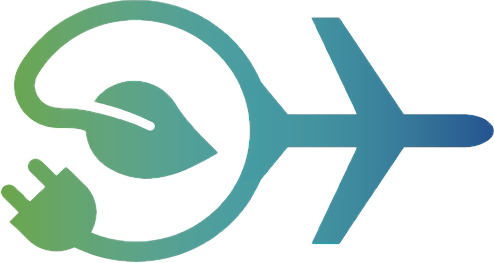# RCAIDE/Library/Plots/Noise/plot_2D_noise_contour.py
#
#
# Created: Jul 2023, M. Clarke
# ----------------------------------------------------------------------------------------------------------------------
# IMPORT
# ----------------------------------------------------------------------------------------------------------------------
from RCAIDE.Framework.Core import Units
# python imports
import numpy as np
import matplotlib.pyplot as plt
import matplotlib.colors
import matplotlib.colors as colors
# ----------------------------------------------------------------------------------------------------------------------
# PLOTS
# ----------------------------------------------------------------------------------------------------------------------
[docs]
def plot_2D_noise_contour(noise_data,
noise_level = None,
min_noise_level = 35,
max_noise_level = 90,
noise_scale_label = None,
save_figure = False,
show_figure = True,
save_filename = "2D_Noise_Contour",
show_elevation = False,
use_lat_long_coordinates = True,
colormap = 'jet',
file_type = ".png",
width = 10,
height = 7):
"""
Creates a 2D contour plot of noise levels with optional terrain elevation.
Parameters
----------
noise_data : NoiseData
RCAIDE noise data structure containing:
- microphone_locations[:,:,0:3]
3D array of microphone positions
- microphone_coordinates[:,:,0:2]
Latitude and longitude of measurement points
- topography_file
Optional path to terrain elevation data
noise_level : ndarray, optional
2D array of noise levels at measurement points
min_noise_level : float, optional
Minimum noise level for contour scale (default: 35 dB)
max_noise_level : float, optional
Maximum noise level for contour scale (default: 90 dB)
noise_scale_label : str, optional
Label for noise metric (e.g., "dBA", "EPNL", etc.)
save_figure : bool, optional
Flag for saving the figure (default: False)
show_figure : bool, optional
Flag to display the figure (default: True)
save_filename : str, optional
Name of file for saved figure (default: "2D_Noise_Contour")
show_elevation : bool, optional
Flag to display terrain elevation contours (default: False)
use_lat_long_coordinates : bool, optional
Flag to use geographic coordinates (default: True)
colormap : str, optional
Colormap specification for noise contours (default: 'jet')
file_type : str, optional
File extension for saved figure (default: ".png")
width : float, optional
Figure width in inches (default: 10)
height : float, optional
Figure height in inches (default: 7)
Returns
-------
fig : plotly.graph_objects.Figure
Handle to the generated figure
Notes
-----
Creates visualization showing:
- Noise level contours
- Optional terrain elevation
- Geographic or Cartesian coordinates
- Customizable color scales
**Definitions**
'Noise Level'
Sound pressure level or derived metric
'Terrain Elevation'
Height above sea level
'Geographic Coordinates'
Latitude and longitude positions
See Also
--------
RCAIDE.Library.Plots.Noise.plot_3D_noise_contour : 3D visualization of noise field
RCAIDE.Library.Plots.Noise.post_process_noise_data : Data preparation for plotting
"""
elevation = noise_data.microphone_locations[:,:,2]/Units.ft
colors_undersea = plt.cm.terrain(np.linspace(0, 0.17, 56))
colors_land = plt.cm.terrain(np.linspace(0.25, 1, 200))
colors = np.vstack((colors_undersea, colors_land))
cut_terrain_map = matplotlib.colors.LinearSegmentedColormap.from_list('cut_terrain', colors)
norm = FixPointNormalize(sealevel=0,vmax=np.max(elevation),vmin=np.min(elevation))
fig = plt.figure(save_filename)
fig.set_size_inches(width,height)
axis = fig.add_subplot(1,1,1)
noise_levels = np.linspace(min_noise_level,max_noise_level,10)
noise_cmap = plt.get_cmap('turbo')
noise_new_cmap = truncate_colormap(noise_cmap,0.0, 1.0)
if use_lat_long_coordinates and (noise_data.topography_file != None ):
LAT = noise_data.microphone_coordinates[:,:,0]
LONG = noise_data.microphone_coordinates[:,:,1]
axis.set_xlabel('Longitude [°]')
axis.set_ylabel('Latitude [°]')
else:
LAT = noise_data.microphone_locations[:,:,0]
LONG = noise_data.microphone_locations[:,:,1]
axis.set_xlabel('x [m]')
axis.set_ylabel('y [m]')
if show_elevation:
CS_1 = axis.contourf(LONG,LAT,elevation,cmap =cut_terrain_map,norm=norm,levels = 20, alpha=0.5)
cbar = fig.colorbar(CS_1, ax=axis)
cbar.ax.set_ylabel('Elevation above sea level [ft]', rotation = 90)
# plot aircraft noise levels
CS_2 = axis.contourf(LONG,LAT,noise_level ,noise_levels,cmap = noise_new_cmap)
cbar = fig.colorbar(CS_2, ax=axis)
cbar.ax.set_ylabel(noise_scale_label, rotation = 90)
fig.tight_layout()
if save_figure:
figure_title = save_filename
plt.savefig(figure_title + file_type )
return fig
# ------------------------------------------------------------------
# Truncate colormaps
# ------------------------------------------------------------------
[docs]
def truncate_colormap(cmap, minval=0.0, maxval=1.0, n=100):
new_cmap = colors.LinearSegmentedColormap.from_list(
'trunc({n},{a:.2f},{b:.2f})'.format(n=cmap.name, a=minval, b=maxval),
cmap(np.linspace(minval, maxval, n)))
return new_cmap
[docs]
class FixPointNormalize(matplotlib.colors.Normalize):
"""
Inspired by https://stackoverflow.com/questions/20144529/shifted-colorbar-matplotlib
Subclassing Normalize to obtain a colormap with a fixpoint
somewhere in the middle of the colormap.
This may be useful for a `terrain` map, to set the "sea level"
to a color in the blue/turquise range.
"""
[docs]
def __init__(self, vmin=None, vmax=None, sealevel=0, col_val = 0.21875, clip=False):
# sealevel is the fix point of the colormap (in data units)
self.sealevel = sealevel
# col_val is the color value in the range [0,1] that should represent the sealevel.
self.col_val = col_val
matplotlib.colors.Normalize.__init__(self, vmin, vmax, clip)
def __call__(self, value, clip=None):
x, y = [self.vmin, self.sealevel, self.vmax], [0, self.col_val, 1]
return np.ma.masked_array(np.interp(value, x, y))
[docs]
def colorax(vmin, vmax):
return dict(cmin=vmin,cmax=vmax)
